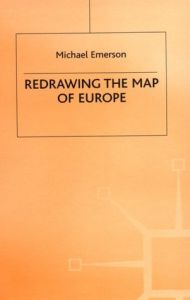Join getAbstract to access the summary!

Join getAbstract to access the summary!
Michael Emerson
Redrawing the Map of Europe
St. Martin’s Press, 1998
What's inside?
Banking on the next missile defense contract? Think the United States should ditch NATO? Worried about international war crimes tribunals? This is the book for you.
Recommendation
Author Michael Emerson – a former European Union (EU) Ambassador to Moscow and European Commission official – has created a concise, systematic analysis of the cultural background, policy issues and the political-science frameworks surrounding the emerging organization of a 21st-century Europe. This is not a book for the casual observer of European politics – but anyone with a sincere curiosity about the nuts-and-bolts construction of the integrated Europe will be fully sated. The book has the advantages and disadvantages of being densely packed with details, but the strong introduction, conclusion and index help the reader put it all together. Although the publication date – 1998 – ensures that some of this information is dated, the book might actually benefit from its pre-euro publication, in that Emerson’s arguments give full optimistic credit to the potential of a unified Europe. getAbstract recommends this valuable resource to executives with business interests in Europe and all students of globalization.
Summary
About the Author
Michael Emerson is Senior Research Fellow with the Centre for Economic Performance of the London School of Economics and Political Science. He has served as an official of the European Commission and as European Union Ambassador to Moscow. He holds an M.A. from Oxford.





















Comment on this summary